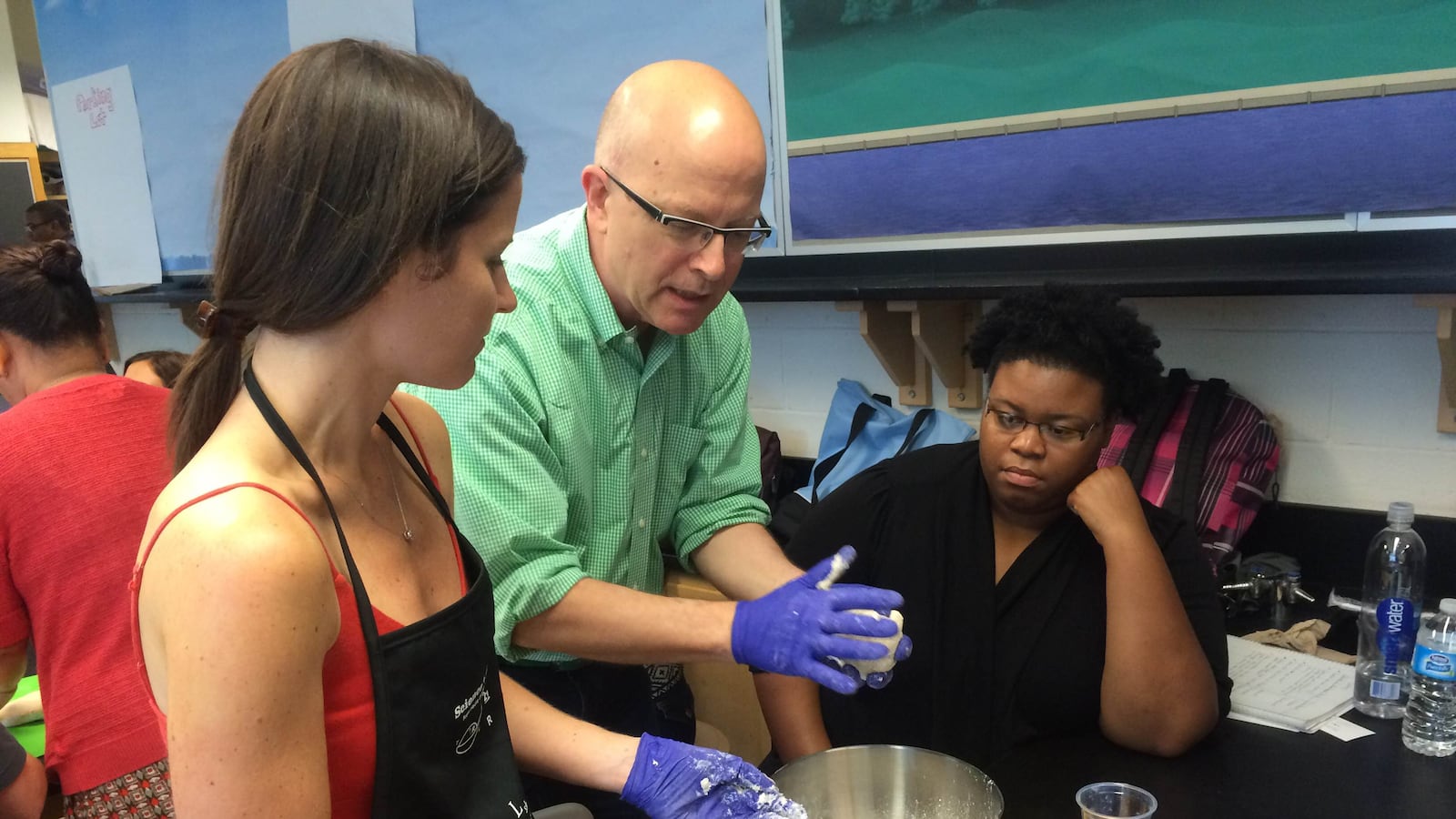Eileen McManus-Reddan, a special education teacher at Brooklyn’s J.H.S. 62, found herself watching a former White House pastry chef make steamed buns on Thursday.
The demonstration by Bill Yosses, who made soufflés for President Barack Obama until 2014, presumably used far fewer ingredients than he would have found in his old kitchen and relied on just a hot plate. The goal, he explained, was to give McManus-Reddan and her colleagues a new way to explain the science of food, featuring homemade (or school-made) yeast.
“It’s something that students at any level can enjoy learning,” McManus-Reddan explained after the workshop.
She was taking part in STEM Institute, a new three-day training program for city teachers that finished its second session on Thursday. Its workshops skewed toward the unconventional, combining academic topics with cooking, video games, gardening, and Legos.
The program, which officials said was attended by more than 400 teachers, continues the city’s effort to expand and improve teaching in math, science, engineering, and technology — and to highlight those efforts. Chancellor Carmen Fariña made a separate appearance at a STEM summer program on Thursday, and officials said the city was releasing a new STEM-focused teaching guide this week as well.
“Science teachers are really going to actually, this coming year, have more extensive training than any year prior to this,” Fariña said at the kickoff of Summer of STEM, a collection of programs run out of New York University’s Polytechnic School of Engineering for teachers and students.
In a brief speech, Fariña said that she wants to see more teachers of younger students incorporating science and technology into their classrooms, starting with pre-kindergarten.
“There was a feeling and a time that STEM was for high school kids,” Fariña said.
The two STEM efforts are made possible by outside funding. The NYU event was celebrating a major grant from the National Science Foundation and venture capitalists Fred and Joanne Wilson, which will help further fund its teacher training programs. Some of the separate STEM Institute workshops were also put on by vendors, like Legos, which makes materials for teaching math.
The goal of the STEM Institute, which trained a first group of teachers this spring, is to introduce elementary, middle, and high school teachers to hands-on projects that connect to specific Common Core learning standards. The city is also trying to make those connections clearer with new guidelines for teaching a variety of science, technology, and engineering topics in each grade, similar to the “scope and sequence” it released in June for science alone and last September for social studies.
Jessika Rosen, a special education teacher at J.H.S. George J. Ryan in Flushing who co-facilitated a robotics session, said she often worked with teachers who weren’t sure how to do hands-on projects while facing pressure to align their teaching to the new standards.
“That’s my big part — showing how they don’t have to be scared to stray away from their curriculum,” Rosen said. “There’s just so many skills you can get from a robot.”

